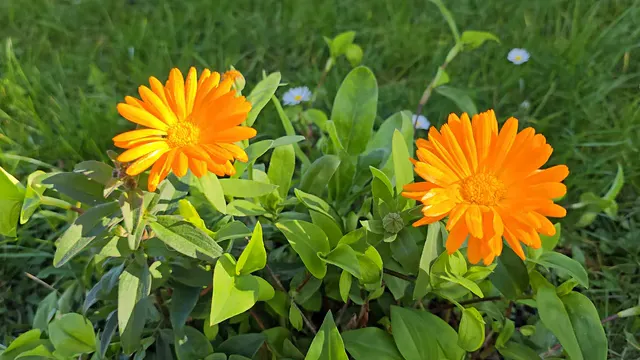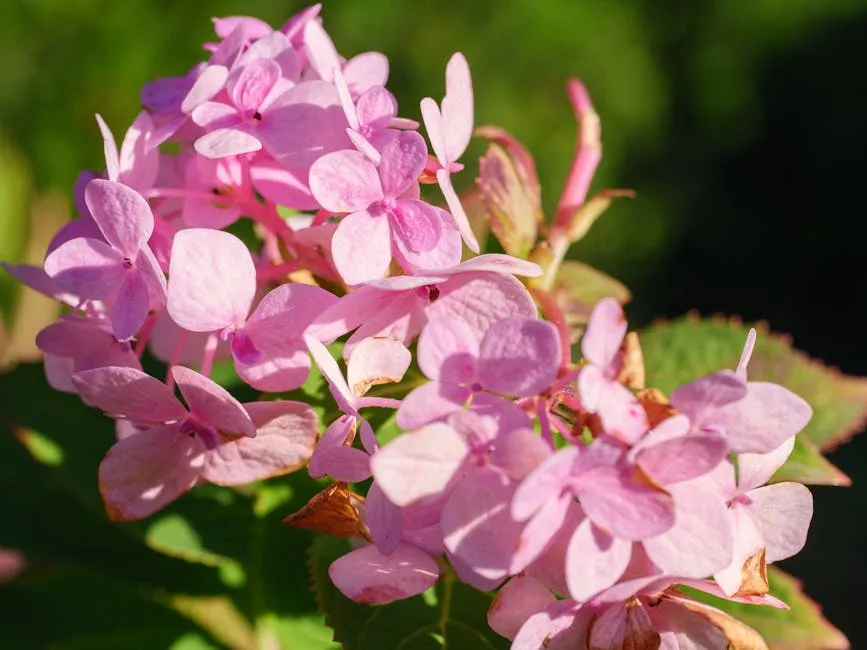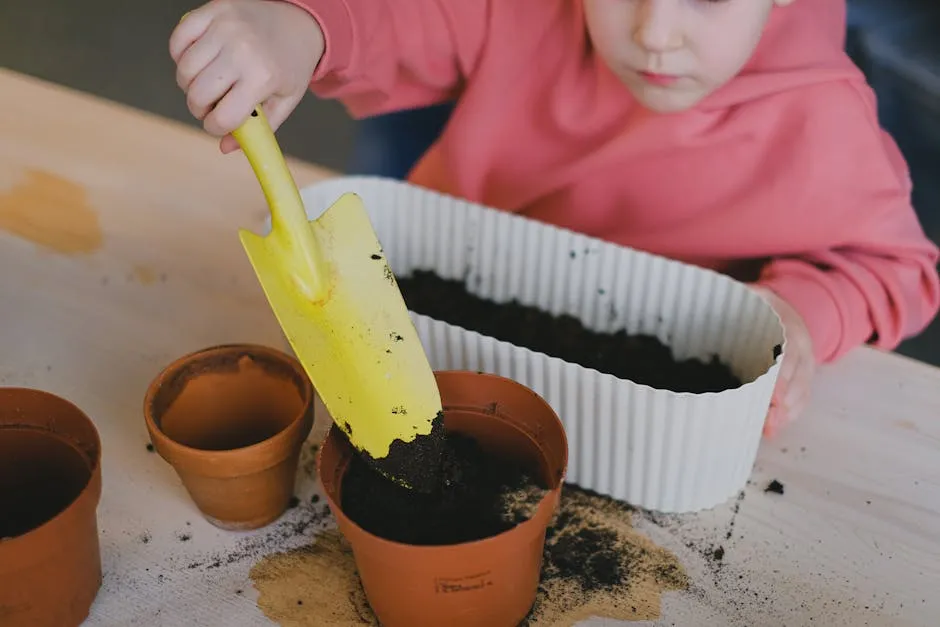

Buy Perennial Plants Online: Your Ultimate Guide
Introduction
Perennial plants are a fantastic addition to any garden. They bloom year after year, providing stunning colors and textures. Unlike annuals, which need replanting each year, perennials come back, saving you time and effort. Buying these plants online offers great convenience. You can shop from home and have them delivered right to your door. This article will guide you on how to effectively purchase perennials online.
And speaking of convenience, investing in a Gardening Tools Set can make your life a whole lot easier. No more searching through your cluttered shed for that one elusive trowel! With everything you need in one spot, you’ll be ready to dig, plant, and prune like a pro.

Summary and Overview
So, what exactly are perennial plants? They are plants that live for more than two years, coming back season after season. Perennials have unique characteristics, such as the ability to regrow from their roots after dying back in winter.
One major advantage of perennials is their longevity. Unlike annuals and biennials, which only last one or two seasons, perennials are a long-term investment in your garden. They thrive in various garden conditions, making it essential to choose wisely based on your specific needs.
As online shopping continues to grow, buying perennials online has become a trend. You can find a wide array of options, from popular varieties to rare finds. This article will cover several key points:
- Tips for selecting the right perennials for your garden.
- Popular perennial varieties to consider.
- Essential care instructions to ensure they thrive.
With this guide, you’ll be well-equipped to make informed decisions when buying perennial plants online. Happy shopping!
Understanding Perennial Plants
What are Perennial Plants?
Perennial plants are those that live for more than two years. They bloom during the growing season and die back in winter. Each spring, they regrow from their roots. This cycle makes them a staple in gardens. They add beauty and structure to any landscape design.
Perennials play a vital role in gardening. They provide continuous color and interest year after year. Unlike annuals, which require replanting, perennials save you time and effort. Their hardy nature makes them adaptable to various climates and conditions.

Benefits of Growing Perennials
Growing perennials offers many advantages. They are a long-term investment in your landscaping. Once planted, they return season after season, meaning less work for you.
Perennials are low maintenance. They often require less water and fewer fertilizers than annuals. Many species are drought-tolerant, thriving in challenging conditions. To give them a little boost, consider using Organic Fertilizer to keep them healthy and thriving!
You’ll find a vast variety of shapes, sizes, and colors among perennials. This diversity allows for creative garden designs. Additionally, perennials support local wildlife, attracting pollinators such as bees and butterflies.
Buying Perennial Plants Online
Where to Buy
When shopping for perennial plants online, choose reputable nurseries. Some well-known options include:
- Proven Winners
- Jackson’s Nurseries
- Great Garden Plants
- Marshalls Garden
Look for retailers with positive customer reviews and good return policies. Trustworthiness is key when buying plants online. Check for guarantees on plant health and delivery options.
Consider the nursery’s shipping practices. Fast and careful shipping ensures your plants arrive healthy. Keep these factors in mind to make the best choice for your garden. And while you’re at it, don’t forget about the importance of a Soil Moisture Meter. It’s like having a garden assistant that tells you when to water!

How to Choose the Right Perennials
Choosing the right perennials can be a rewarding experience. Start by considering your climate zone. This helps ensure the plants can thrive in your area. Next, assess your soil type. Some plants prefer sandy soil, while others thrive in clay or loamy conditions.
Light conditions also play a significant role. Determine how much sun your garden receives daily. Do you have full sun, partial shade, or full shade? Each perennial has its light preferences, so match them accordingly.
Think about the purpose of your garden. Are you aiming for beauty, attracting wildlife, or both? Understanding what you want will guide your selections.
Finally, familiarize yourself with plant features. Look at the size of the plants, their bloom times, and growth habits. This knowledge will help you create a harmonious and thriving garden.
Tips for Ordering Perennials Online
When ordering perennials online, reading descriptions is key. Look for details about size, color, and care requirements. This way, you can choose plants that fit your garden.
Check the availability of the plants. Seasonal considerations matter, as some plants may not be ready for shipping. Confirm the timing so you can plant them at the right moment.
Shipping and delivery options are crucial, too. Ensure the nursery provides good delivery practices. Fast shipping is important, but careful packaging is essential to keep plants healthy during transit.
Popular Perennial Varieties
Top Perennials for Beginners
If you’re new to gardening, start with easy-to-grow perennials. Here are some great options:
- Daylilies: These hardy plants bloom in various colors. They tolerate drought and are perfect for beginners.
- Sedum: Known for their succulent leaves, sedums thrive in poor soil and require little care.
- Echinacea (Coneflower): This vibrant flower attracts pollinators. It’s drought-tolerant and blooms throughout summer.
- Black-Eyed Susan: With bright yellow petals, this perennial is easy to grow and adds a cheerful touch to any garden.
- Geraniums: These lovely flowers come in many varieties. They are hardy and provide beautiful blooms with minimal effort.
Start with these perennials to create a colorful and low-maintenance garden! And don’t forget to protect your hands while gardening; a good pair of Planting Gloves can make all the difference!

Best Perennials for Seasonal Interest
Creating a beautiful garden means choosing plants that bloom at different times. This strategy keeps your garden vibrant year-round.
In spring, consider planting Tulips and Daffodils. They add early color when most gardens still look bare. As summer approaches, Daylilies and Echinacea take the stage. Their bright blooms attract pollinators and create a lively atmosphere.
For fall, Asters and Japanese Anemone provide stunning hues. They ensure your garden remains colorful even as temperatures drop.
Combine these plants for a continuous display. Picture spring bulbs emerging, followed by summer blooms, and finishing with fall colors. This variety creates a dynamic landscape that changes throughout the year.
Perennials for Specific Conditions
Not all perennials thrive in the same environment. Choosing the right plants for your garden conditions can lead to a flourishing landscape.
For shady areas, Hostas and Ferns are excellent choices. They thrive in low light and add lush greenery. If your garden has well-drained soil, consider Lavender and Sedum. These plants are drought-tolerant and require minimal care.
In contrast, Astilbe and Ligularia love moist environments. Plant them in areas with consistent moisture for the best results. For clay soils, Black-Eyed Susans and Rudbeckia perform well. These varieties adapt to heavier soils, making them perfect for challenging locations.
By selecting perennials suited to your garden’s conditions, you ensure a thriving outdoor space. And while you’re at it, consider adding a Garden Kneeler and Seat for extra comfort while you work!

Caring for Your Perennials
General Care Tips
Caring for perennials is straightforward. Regular watering is essential, especially during dry spells. Aim for deep watering to encourage strong root growth. Fertilizing in spring can boost growth. Use a balanced fertilizer to provide essential nutrients.
Pruning is also vital. In late autumn, cut back dead stems. This promotes new growth in spring. Create a seasonal checklist to keep track of tasks. Include watering, fertilizing, and pruning in your routine.

Common Issues and Solutions
Pests and diseases can pose challenges for perennials. Common pests include aphids and slugs. To combat these, consider natural remedies like neem oil or hand-picking. You can also use an Organic Pest Control Spray to keep those pesky critters at bay!
Diseases such as powdery mildew often occur in humid conditions. Ensure good air circulation around your plants to prevent this. Regularly inspect your plants for any signs of distress. Early detection is key to maintaining plant health.
By addressing these common issues, you can keep your perennials thriving and productive.
Conclusion
Buying perennial plants online offers many benefits. You enjoy convenience, a vast selection, and often lower prices. No need to drive around nurseries or wait in long lines. Instead, browse various options from the comfort of your home.
Perennials provide long-term investment for your garden. They return each year, filling your space with beauty and color. Many online retailers offer unique varieties not found locally. This allows you to create a distinctive garden tailored to your style.
Before making a purchase, consider your garden’s specific needs. Think about your climate, soil type, and light conditions. This ensures you select perennials that will thrive in your space. So, go ahead and explore the wonderful world of perennial plants available online!
Buying perennial plants online can be a great way to find the perfect additions to your garden. buy perennial plants online
FAQs
What are the best perennial plants for beginners?
If you’re new to gardening, start with easy-to-care-for perennials. These include: Daylilies: Hardy and colorful, they bloom all summer. Sedum: Low maintenance and drought-tolerant. Echinacea (Coneflower): Attracts pollinators and is drought-resistant. Black-Eyed Susan: Bright yellow flowers, very easy to grow. Geraniums: Versatile and vibrant, perfect for beginners.
How do I know if a perennial is suitable for my climate?
To select the right perennial for your area, check hardiness zones. Most plant descriptions include this information. You can find your local climate zone online. Match the plant’s zone to yours for best results.
When is the best time to buy and plant perennials?
The best time to buy perennials is during spring or fall. Spring planting helps them establish roots for the growing season. Fall planting allows them to settle in before winter. Order online ahead of these seasons to ensure availability.
Can I get a guarantee on my online plant purchases?
Many online nurseries offer guarantees for plant health. Look for a one-year guarantee, which ensures your plants will thrive. If they don’t, you can often receive a replacement or refund.
What should I do if my perennials don’t thrive?
If your perennials struggle, first check the planting conditions. Ensure they have enough water, sunlight, and appropriate soil. Look for signs of pests or diseases. Consulting gardening forums or local experts can also provide helpful advice.
Are there any specific care tips for newly planted perennials?
After planting, water your perennials regularly. This helps them establish their root systems. Mulching can also retain moisture and suppress weeds. Monitor their growth closely for any signs of stress.
How do I properly acclimate my plants before planting them in the garden?
Acclimating your plants is essential for their success. Start by placing them outside in a shaded area for a few hours. Gradually increase their exposure to sunlight over a week. This helps them adjust to their new environment without shock.
Please let us know what you think about our content by leaving a comment down below!
Thank you for reading till here 🙂
All images from Pexels



